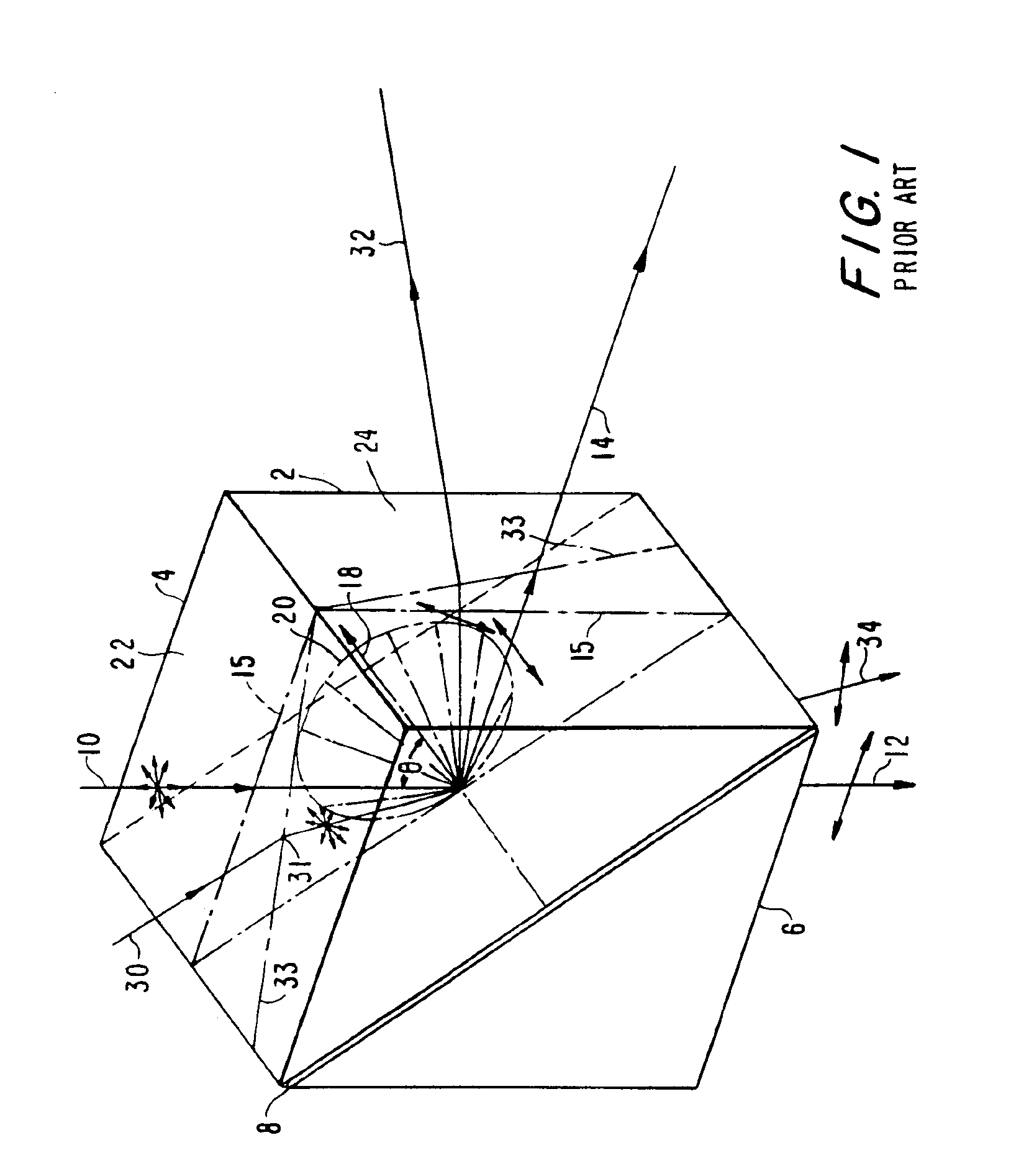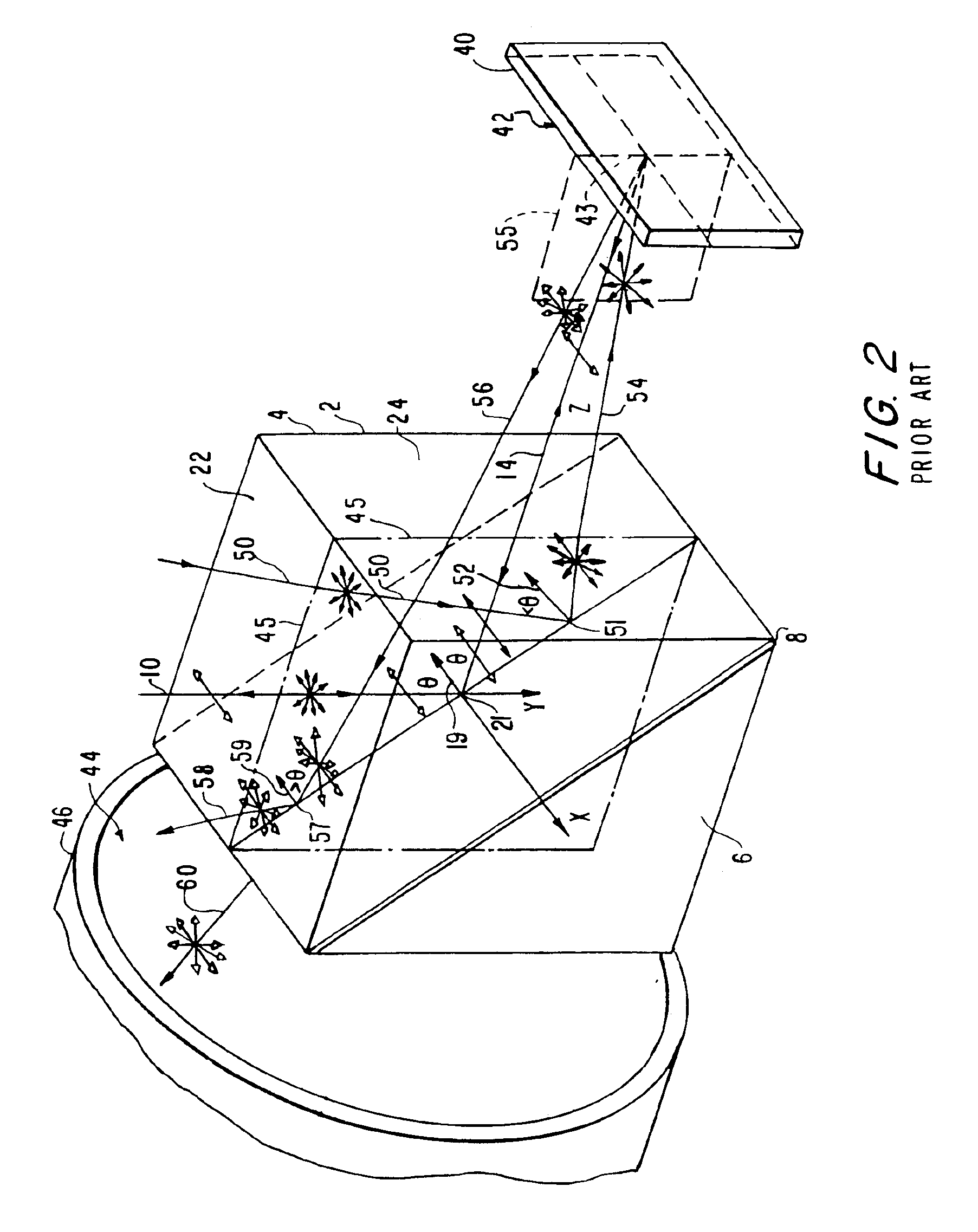Digital image projector with oriented fixed-polarization-axis polarizing beamsplitter
a fixed-polarization axis, beam splitting technology, applied in the field of digital image projectors, can solve the problems of insufficient reduction of light leakage to dark-pixel locations in the projected image, conventional digital image projectors based on reflective polarization modulators, and failure to completely achieve the effect of reducing the amount of light leakage to dark-pixel locations
- Summary
- Abstract
- Description
- Claims
- Application Information
AI Technical Summary
Benefits of technology
Problems solved by technology
Method used
Image
Examples
Embodiment Construction
[0080]Turning now FIG. 7, a first preferred digital-image projector 500 includes an illumination-beam source assembly 502, which includes a high-intensity lamp 504 located in a parabolic reflector 506. The illumination-beam source assembly 502 produces an illumination beam of unpolarized, white-spectrum light for the projector. For simplicity, in FIG. 7 beams of light are indicated only by the central rays of the various beams, such as the central ray 508 of the unpolarized illumination beam produced by the illumination-beam source assembly 502. Ultraviolet, infrared, and color-compensation filters (not shown) are placed in the path of the illumination beam to remove light of ultraviolet and infrared frequencies from the beam and impart a desired color spectral shape to the frequency spectrum of the beam.
[0081]A light-conserving beam-polarizer assembly 510 is located in the path of the unpolarized illumination beam 508 in the preferred digital-image projector 500. The beam-polarizer...
PUM
| Property | Measurement | Unit |
|---|---|---|
| angle | aaaaa | aaaaa |
| polarizing angle | aaaaa | aaaaa |
| wavelength | aaaaa | aaaaa |
Abstract
Description
Claims
Application Information
 Login to View More
Login to View More - R&D
- Intellectual Property
- Life Sciences
- Materials
- Tech Scout
- Unparalleled Data Quality
- Higher Quality Content
- 60% Fewer Hallucinations
Browse by: Latest US Patents, China's latest patents, Technical Efficacy Thesaurus, Application Domain, Technology Topic, Popular Technical Reports.
© 2025 PatSnap. All rights reserved.Legal|Privacy policy|Modern Slavery Act Transparency Statement|Sitemap|About US| Contact US: help@patsnap.com



